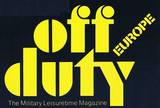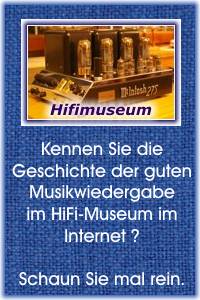"off duty" 1970 - 1997 - eine Freizeit-Zeitung für's US-Militär
Die in diesem amerikanischen (Freizeit-) Shopping-Magazin angepriesenen Hifi- und Video-Produkte waren auschließlich amerikanischen und kanadischen Militärangehörigen zugänglich - also zu kaufen - und vor allem zu ganz ungewöhnlich (verblüffend) niedrigen US $ Military-Preisen. Zu der einführenden "off duty" Seite geht es hier lang. - Um 1970 begann der weltweite Hifi-Boom bis zum 1. Crash 1978 und dann wieder zum 2.Crash um 1990. Über die 20 Jahre nach 2001 lesen Sie mehr in den Kolumnen auf diesen japanischen Seiten.
.
Die Plattenspieler und Abtaster zum Ende 1974
Aus dem Jahr 1973 fehlt uns leider der Vergleich, weil die Ausgabe 12 (Dezember) nicht in dem erhaltenen Redaktions-Paket enthalten war. So bleibt der Vergleich mit 1972. Auffällig ist hier in 1974, daß im Gegensatz zu den Receivern und Verstärkern doch noch ein paar deutsche Firmen am Weltmarkt teilnehnen, das waren DUAL, PE und ELAC.
Weiterhin auffällig ist das Überangebot der Japaner. Firmen, die nie etwas mit Plattenspielern zu tun hatten, haben aufeinmal welche im Angebot. Daß ein Teil davon in der deutschen Hifi-Stereophonie verrissen wurde, spielte hier in der off-duty Werbezeitung keine Rolle.
.
Keep Your Record Sound
Turntables, compact systems and pickup cartridges - they're all here - By STEVEN RAUTENBERG and STEVEN LOWE - Off Duty / Europe / December 1974
.
Music lovers continue with nearly three decades old LP
WHILE THE DEBATE over tape format rages, most music lovers continue to rely on the familiar, nearly three decades old LP as their preferred medium for the enjoyment of music at home. Check the exchanges (gemeint sind die Plattenverkaufsläden der military Organisationen) or, better yet, the various record and tape catalogs and you quickly discover that, while anything available on tape is also on record, the reverse is most emphatically not true. If your musical taste is at all inquisitive you will find yourself increasingly dependent upon discs.
As the price of LPs continues to rise, it becomes increasingly important to own a quality turntable that will protect your record investment. A poorly designed or badly constructed record playing device will virtually chew up the vinyl grooves of your precious albums. If you plan to collect LPs for any length of time you will find that your investment in discs will far exceed the cost of your equipment. Therefore choose your turntable with considerable care; do not skimp here.
Types of turntables.
The word "turntable" is used to describe the entire field of high-fidelity record turners. Within this field the word is also used to denote those record turners which do not have the capability of changing records. Among the turntables available are completely manual ones, semi-automatic turntables which shut off automatically at the end of the record, and automatic turntables which automatically cue themselves and shut off at the end of the record. Record turners which can automatically play their way through a stack of records are called "changers."
If you require the undeniable convenience of automatic play, feel free to examine the many units falling into this category. In "the good old days" audiophiles tended to look with disdain upon anything
lessthan a two-ton manual turntable.Things have changed considerably however, thanks to the increasingly critical standards required for successful stereo and quadraphonic listening. Today's automatic turntables can often exceed the performance specs touted by manufacturers of manual units only a few years ago.
But automation is not for everyone. Many record collectors do not stack records, and while it is true that most changers allow the option of manual play, it may seem wasteful to pay for something you're not going to use. In the last two years a growing roster of semi-automatic units has appeared; with excellent specs and the convenience of automatic shut-off, they attempt to offer the best of both worlds.
Despite the undeniable excellence of current automatic and semi-automatic design, manual turntables will continue to be a viable market item. In terms of durability and state-of-the-art performance, manual turntables still enjoy a distinct edge over more feature-laden turntables. Some manuals require the addition of separate tone arms, thereby increasing expenditure, but flexibility and user option as well.
Drive Systems.
Turntables are driven by motors, and there are currently three basic types used to keep your records spinning accurately. For many years the most commonly used have been the induction and synchronous motors. One potential problem with both types is that speed fluctuates when there is a change in line voltage or frequency. Still, virtually all turntables have employed one of these two motors for many years with generally satisfactory results.
The latest type of drive system is electronically controlled. A built-in power supply and special electronic circuit adjust turntable speed constantly for pinpoint accuracy. This kind of system offers maximum performance but the initial cost is in most cases considerably higher than that of induction or synchronous mechanisms.
There are three basic and widely used systems for transmitting power from the motor to the actual platter: idler, belt drive, and direct. Most automatics and older manuals employ the idler, and a well-designed unit can offer very satisfactory results. But over the past several years many manufacturers have tended to opt for belt driven machines because they provide better isolation between the motor and platter. The most recent method is the direct drive type which employs low speed motors and generally offers the best overall specs. As if you haven't guessed, they tend to be relatively expensive.
Turntable performance.
Two basic criteria are used in evaluating turntable performance - wow and flutter, and rumble. Rumble is the vibration and other low-frequency distortion produced by a turntable. Because the lowest frequencies are inaudible to the human ear, a method of measuring rumble was devised that did not include these lowest tones.
Called "DIN B" or simply "weighted" this method will, as an example, result in a rumble figure of -60dB compared to a conventional rumble figure (called either "DIN A" or NAB) of -45dB. A weighted figure of -55dB or unweighted -40dB are typical of good turntables. Wow and flutter is a measurement of short term speed fluctuations which affect pitch and are particularly noticeable on sustained tones. A wow and flutter figure for a good turntable should be 0.1 per cent or less.
Tone arms.
Most turntables, including manuals, now come with built-in tone arms which are far more sophisticated than those of just a few years vintage. If you have special needs you may still want to consider separate, specially built tone arms.
The tone arm is an extremely important part of the total system, especially now with the increasing use of low mass cartridges operating at exceptionally low tracking forces. Most of today's tone arms offer features designed to allow for critical adjustments of cartridge overhang and height, vertical balance, horizontal balance (including anti-skate properties) to prevent the uneven wear of the inside walls of record grooves caused by the natural tendency of a pivoted arm to move toward the center of a rotating disc. A few manufacturers offer straight-line tracking or articulating arms which eliminate this kind of error.
Special features.
Among the non-essential but useful features, many units provide cuing controls for gentler, more accurate raising and lowering of tone arms. Many of these devices eliminate potential damage resulting from dropped arms through the use of viscous damping. Another feature which may prove useful to musicians who wish to play along with recordings is variable speed control.
Cartridges.
The most expensive part of any stereo system, by weight or size, is the phono cartridge. It is this small workhorse and its stylus assembly that convert the mechanical impulses in the record grooves into electrical impulses which are then transmitted through the rest of the system to emerge (once again) as mechanical impulses from the loudspeakers.
The degree of ease with which the cartridge responds is known as "compliance" and the figure will usually look similar to this: 25 x 10-6 cm/dyne. Naturally, the higher the figure, the greater the compliance of the cartridge and the easier the stylus will be able to follow the signal in the groove. As a reference for compliance, keep in mind that 35 x 10-6 cm/dyne is considered high, while compliances below 20 x 10-6 cm/dyne are usually considered as being somewhat low.
Some of the biggest advances are being made in the area of phono cartridge design. The primary reason is the emergence of the CD-4 type 4-channel disc developed by JVC - requiring a flat frequency response up to 45 kHz. In checking out a stereo cartridge look for a minimum frequency response of 20 to 20k Hz and minimum channel separaton 25 to 30 dB.
Styli.
The stylus of a cartridge is what was once commonly refered to as the needle. Virtually all top quality styli are diamond. There are three basic shapes of styli - spherical, elliptical and tri-radial.
As a general rule an elliptical or "bi-radial" stylus will provide a better frequency response and less distortion than the spherical type. A cartridge with an elliptical stylus, however, must have a lighter tracking force to prevent record wear. The tri-radial or "Shibata" stylus was especially designed for 4-channel CD-4 discs although it is compatible to stereo records as well.
A good cartridge should not track at a force heavier than 2 grams. Exceptions to this rule are cartridges with tri-radial styli because they provide a greater contact with the record surface, thereby lowering the effective tracking force per square inch, and cartridges especially designed for recording or broadcast use where stability is more important than long term record wear.
4-channel turntables.
The advent of quadraphony has introduced some new factors into turntable design in the same way that stereo set new standards in the late 1950s.
CD-4 LP albums carry a 30 kHz subcarrier signal (with additional information up to 45 kHz) in order to activate the special 4-channel circuits within the demodulator.
Not only has this new technique necessitated the development of suitable cartridges, but special low capacitance cables as well. Cables of conventional capacitance will not properly conduct the high frequency carrier signal. As long as you're interested in 4-channel sound this is a factor worth bearing in mind as you narrow down your choices.
Some information truly about a buyer's market
As you will see from a glance at the following SHOPPER listings it is truly a buyer's market. There are turntables for virtually every need and desire. Look carefully and remember: a turntable physically affects your costly LPs, so don't cut back on this part of your system.
.
Compact systems. (all in low cost area)
There is a wide range of compact systems available to the person who wants to buy a stereo or 4-channel complete system and know that everything has been pre-matched for best performance.
To qualify for our compact system section a system must include at least a turntable and 4-channel or stereo amplifier - most will also have speakers and a built-in tuner. Some require you to select speakers or they have built-in cassette or cartridgetape recorders.
You will also find a choice of output powers, home-type or portable units and, usually, provisions for external components.
- Anmerkung : Diese Komplettsysteme sind überwiegend von minderer Qualität und darum werden die hier nicht mehr aufgeführt.
.


